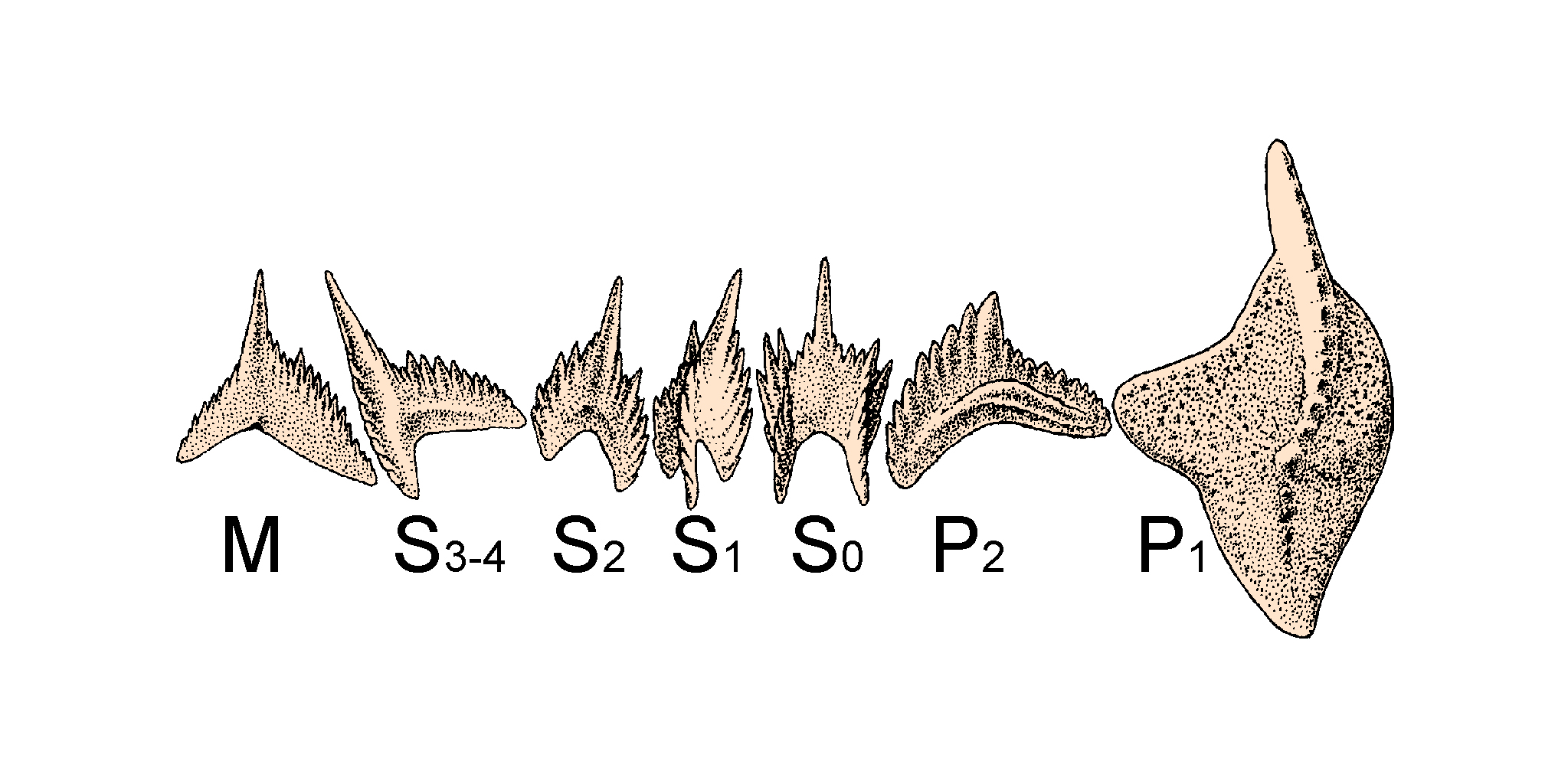Diagnoza
M element with almost straight cusp and short but well denticulated ventral process forming a wide angle with the prominently denticulated dorsal process. Porównanie
Schülke (1999) proposed to use the name Palmatolepis abnormis (Branson et Mehl, 1934) for this species. However, as pointed out by Klapper et al. (2004, p. 382) the P2 element from the Saverton Shale chosen to be the holotype of this species is undiagnostic and indistinguishable from ones that occur in different apparatus reconstructions (according to Branson and Mehl 1934 there is a ‘fairy complete gradation’ to other P2 specimens in the sample) and the species is invalid (a nomen dubium). It is rather the M element that bears characters diagnostic for the species. In its shape, with slightly reclined cusp, it is transitional between the ancestral morphology of Klapperilepis and that of Palmatolepis and Conditolepis. The population from sample Pł-1 (Fig. 80H-R) is probably the oldest one in my material showing features of P. initialis sp. n., but the generally small size of elements makes it similar rather to Klapperilepis triangularis. P1 elements of these two species seem to be indistinguishable. Autekologia Występowanie geograficzne
Płucki and Jabłonna. Zasięg czasowy
Mid K. triangularis Zone. Materiały muzealne
ZPAL: 2,041 specimens. Literatura
Dzik, J. 2006. The Famennian "Golden Age" of conodonts and ammonoids in the Polish part of the Variscan sea. Palaeontologia Polonica 63, 1-359. | 

